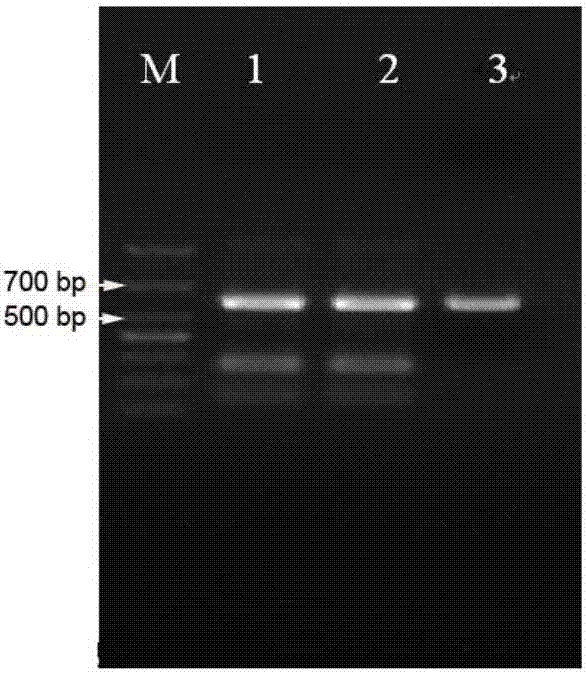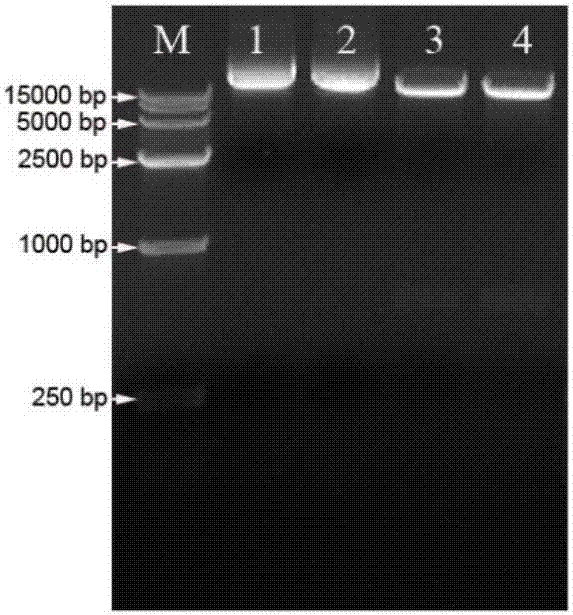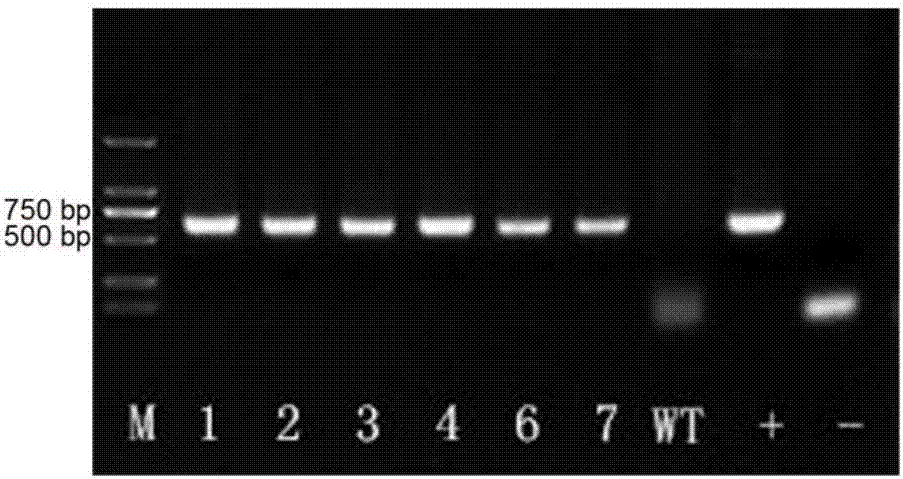Halogeton glomeratus salt tolerant gene HgS2 and application thereof
A salt-tolerant gene and salt-growing grass technology, applied in the field of plant bioengineering and transgenics, can solve the problems of salt-tolerant gene excavation, which is rarely reported, and achieve the effect of easy genetic transformation operation
- Summary
- Abstract
- Description
- Claims
- Application Information
AI Technical Summary
Problems solved by technology
Method used
Image
Examples
Embodiment 1
[0035] The preparation method of halophytic grass salt tolerance gene HgS2 described in embodiment 1, its main feature is that the steps are:
[0036] Using 200mM NaCl stress treatment for 7 days as the material, the total RNA was extracted by Trizol method, and the first strand of cDNA was synthesized by reverse transcription using the cDNA synthesis kit (Dalian Bao Biological Engineering Co., Ltd.), and designed according to the sequence of HgS2 The upstream and downstream primers F1 (5'-AAAAAATGGCACAATTTCAGCTCC-3') and R1 (5'-GTAGTAGAAATGCGTTGATGTCCA-3') (synthesized by Shanghai Sangon Bioengineering Co., Ltd.) amplify the gene fragment, and the PCR reaction system is 10×Ex Taq Buffer (Mg 2+ Plus) 2.5 μL, dNTP Mixture (each 2.5 mM) 2 μL, upstream primer (5'-AAAAAATGGCACAATTTCAGCTCC-3') (10 μM) 1 μL, downstream primer (5'-GTAGTAGAAATGCGTTGATGTCCA-3' (10 μM) 1 μL, cDNA 1 μL, Ex Taq Enzyme 0.2 μL, ultrapure water 17.3 μL, total volume 25 μL; the amplification program was 94°C...
Embodiment 2
[0043] Embodiment 2: the preparation method of the described halophytic grass salt-tolerant gene HgS2 is characterized in that the steps are:
[0044] Using 500mM NaCl stress treatment for 3-7 days as material, the total RNA was extracted by the Trizol method, and the first strand of cDNA was synthesized by reverse transcription using a cDNA synthesis kit, and the gene fragment was amplified. The PCR reaction system was as follows: 10×Ex Taq Buffer Mg 2+ Plus 2.5 μL, dNTP Mixture 2.5 mM each 2 μL, upstream primer F1 5'-AAAAAATGGCACAATTTCAGCTCC-3' 10 μM 1 μL, downstream primer R1 5'-GTAGTAGAAATGCGTTGATGTCCA-3' 10 μM 1 μL, cDNA 1 μL, Ex Taq enzyme 0.2 μL, ultrapure water 17.3 μL, The total volume is 25 μL; the amplification program is 94°C for 4 min, 94°C for 50 s, 60°C for 50 s, 72°C for 25 s, a total of 32 cycles, and 72°C for 7 min; use the gel recovery kit to recover the PCR product, and follow the steps in the manual: first, agarose Use the gel to detect the size of the ta...
Embodiment 3
[0045] Embodiment 3: the construction method of the expression vector of described halophytic grass salt tolerance gene HgS2, its steps are:
[0046] Two restriction sites, Xba I and Sma I, were respectively added to the upstream and downstream primers of the salt-tolerant gene HgS2 of the halophytic grass, the upstream primer F1 was 5'-GCTCTAGAAAAAAATGGCACAATTTCAGCTCC-3', and the downstream primer R1 was 5'- CGACCCGGGGTAGTAGAAATGCGTTGATGTCCA-3':
[0047] Using 200-500mM NaCl stress treatment for 3-7 days as material, the total RNA was extracted by the Trizol method, and the first strand of cDNA was synthesized by reverse transcription using a cDNA synthesis kit, and the gene fragment was amplified, and the PCR reaction system was used. 10×Ex Taq Buffer Mg 2+Plus 2.5 μL, dNTP Mixture 2.5 mM each 2 μL, upstream primer 5’-GCTCTAGAAAAAAATGGCACAATTTCAGCTCC-3’ 10 μM 1 μL, downstream primer 5’-CGACCCGGGGTAGTAGAAATGCGTTGATGTCCA-3’ 10 μM 1 μL, cDNA 1 μL, Ex Taq enzyme 0.2 μL, ultrapu...
PUM
 Login to View More
Login to View More Abstract
Description
Claims
Application Information
 Login to View More
Login to View More - R&D
- Intellectual Property
- Life Sciences
- Materials
- Tech Scout
- Unparalleled Data Quality
- Higher Quality Content
- 60% Fewer Hallucinations
Browse by: Latest US Patents, China's latest patents, Technical Efficacy Thesaurus, Application Domain, Technology Topic, Popular Technical Reports.
© 2025 PatSnap. All rights reserved.Legal|Privacy policy|Modern Slavery Act Transparency Statement|Sitemap|About US| Contact US: help@patsnap.com



